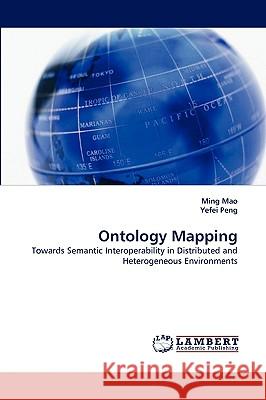Ontology Mapping » książka
Ontology Mapping
ISBN-13: 9783838342290 / Angielski / Miękka / 2010 / 172 str.
The WWW now is widely used as a universal medium for information exchange. Semantic interoperability among different information systems in the WWW is limited due to information heterogeneity, and the non semantic nature of HTML and URLs. Ontologies have been suggested as a way to solve the problem of information heterogeneity by providing formal, explicit definitions of data and reasoning ability over related concepts. Given that no universal ontology exists for the WWW, work has focused on finding semantic correspondences between similar elements of different ontologies, i.e., ontology mapping. In this book, two generic ontology mapping approaches are proposed. The first approach is the PRIOR+ approach, a new generic and adaptive ontology mapping approach that is based on propagation theory, information retrieval techniques and artificial intelligence. The second approach is a non-instance learning-based approach that transforms the ontology mapping problem to a binary classification problem and utilizes machine learning techniques as a solution. Experimental results show both approaches perform well on the tests of OAEI ontology matching campaign 2007.
The WWW now is widely used as a universal medium for information exchange. Semantic interoperability among different information systems in the WWW is limited due to information heterogeneity, and the non semantic nature of HTML and URLs. Ontologies have been suggested as a way to solve the problem of information heterogeneity by providing formal, explicit definitions of data and reasoning ability over related concepts. Given that no universal ontology exists for the WWW, work has focused on finding semantic correspondences between similar elements of different ontologies, i.e., ontology mapping. In this book, two generic ontology mapping approaches are proposed. The first approach is the PRIOR+ approach, a new generic and adaptive ontology mapping approach that is based on propagation theory, information retrieval techniques and artificial intelligence. The second approach is a non-instance learning-based approach that transforms the ontology mapping problem to a binary classification problem and utilizes machine learning techniques as a solution. Experimental results show both approaches perform well on the tests of OAEI ontology matching campaign 2007.











